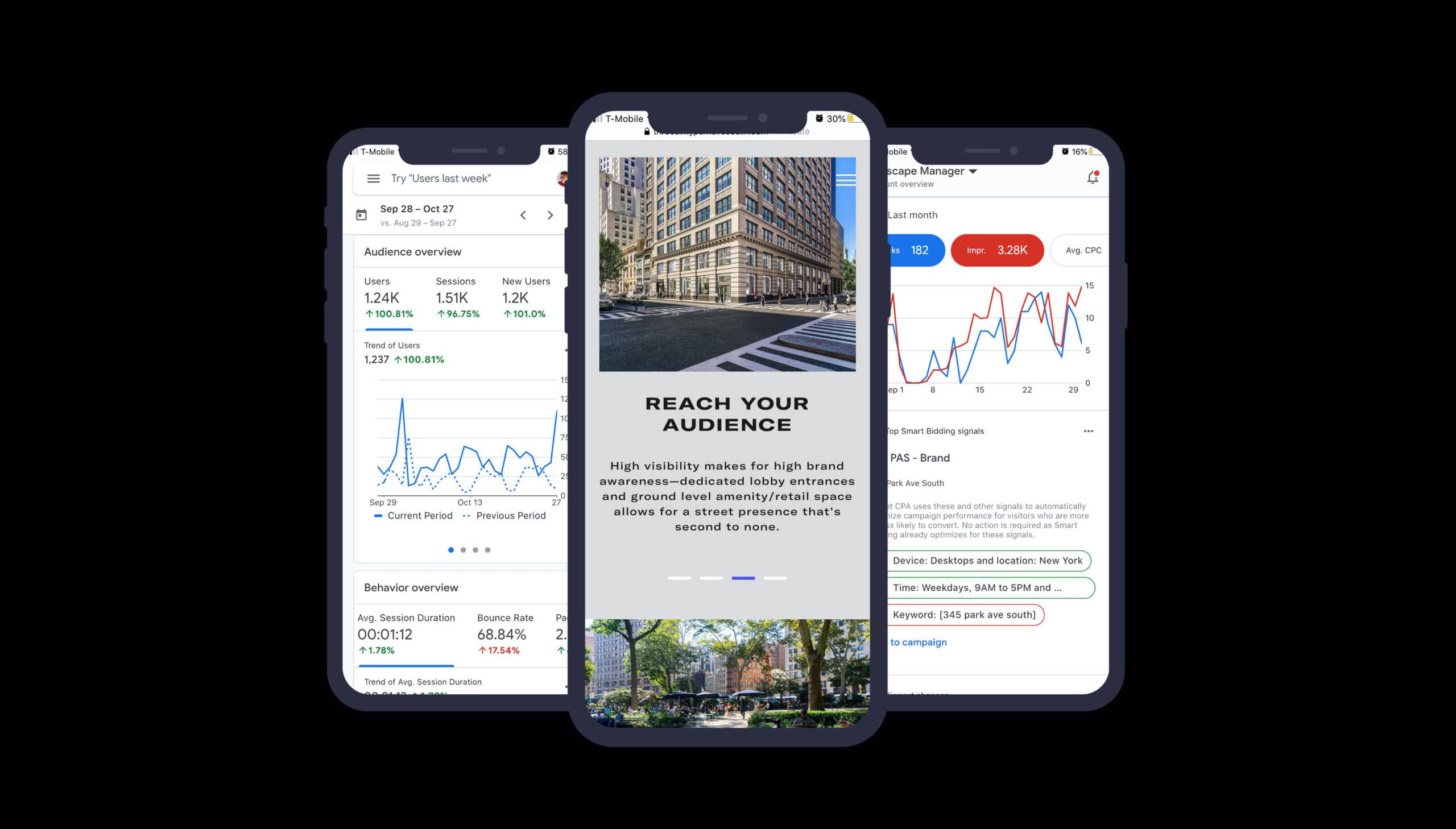
Despite living in a digitally-focused world, where it seems like even your dog requires an Instagram account, not every project’s marketing plan must include a website, social media, email, and other digital components as table stakes. However, many businesses overlook the most valuable asset that comes with any kind of digital marketing campaign: the ability to gather, analyze, and act based on performance data.
At Neoscape, our digital team works with clients to deliver paid campaign results, website data, and recommendations for refinements on a monthly basis – or even more frequently depending on the project. Below, our digital experts explain how to get the most out of your data.
Keep Everything in Context
Measuring the value of a campaign, website, or other marketing investment requires more than simply gathering data. It requires an understanding of that data in the proper context. In fact, one of the most common questions we are asked by clients is some variation of “Are these good numbers?”
While “good” is somewhat subjective, the most common ways to measure the relative success of your digital initiatives include:
- Industry average benchmarks – Compare your campaign’s performance to the averages for your particular industry. This will give you a general idea of how you are doing compared to similar companies and projects. For example, below are actual monthly numbers for one of our NYC life science real estate client’s pay-per-click campaigns vs the industry average.
- Cost per click: $1.51 vs industry average $2.37
- Cost per click: -$0.86 (36% better than avg)
- Click through rate: 8.01% vs industry average 3.71%
- Click through rate: +4.30% (116% better than avg)
- Past performance comparison – There may be many reasons why your campaigns perform better – or worse – than the industry average. You may be targeting a niche audience or a highly competitive geographic market. Therefore, you should always compare your campaign’s performance to past data on a monthly, quarterly, and even yearly basis. For example, below is a snapshot of the site traffic for a very small website for a commercial real estate project. Since this site is small and very niche, its numbers are generally lower than available industry stats. However, year over year, we have increased this site’s traffic by 537% with a 671% increase in new visitors and a 324% increase in pageviews.

- Return on investment – Ultimately, the best metric for measuring the success of a digital campaign using performance data is actual cost versus return. For example, a commercial real estate website might have very low traffic numbers. But if even a few of those website visitors express interest in signing a large lease or reach out for more information, then the time and money invested to build and optimize the website are well worth it. On the flip side of the coin, a website might receive tens of thousands of visitors and smash industry averages out of the park. However, if none of those site visitors are in the correct audience and do not sign leases, then the campaign may not be performing well.
These are just a few factors that should be considered when analyzing your marketing data and results. Stay tuned to the Neoscape blog for a deeper dive into the most common explanations, limitations, and use cases for your website data.
Data Is Only as Useful as You Make It
Seeing the numbers and understanding what they mean in the proper context is a crucial first step for any digital campaign. However, the true value of your marketing data is in how you use it to adjust, refine, and pivot your campaigns on an ongoing basis. Since digital assets like your website, social media profiles, and ad campaigns only exist virtually, your marketing agency can make changes and improvements in real time.
For example, if one of your social media ad campaigns is performing below par for a certain demographic, then you can make adjustments to the copy, targeting, creative, or timing to reach a more responsive audience. Constantly applying the learnings gathered from your marketing data is the key to improving your numbers month over month, and ultimately gaining the most significant ROI possible.
While ROI is relatively easy to calculate for ecommerce, products, and some services, it can be more difficult to determine for clients in industries like real estate, technology, and other areas with long lead-times. Therefore, it is critical to work closely with your marketing agency to ensure you have the information you need, and that they do as well.
Numbers Count Beyond the Project Launch
At Neoscape, we work with many clients from the very start of a project or venture. We develop the brand, visual design, guidelines, and voice in addition to full suites of marketing collateral and strategy. From there, our teams deploy campaigns and work on an ongoing basis with clients to make the most of their new brand and assets.
One of the challenges of marketing something like a multi-year real estate development is that many people think the work ends when a project or brand launches. In reality, active monitoring and refinement of your marketing campaigns is essential to see the most value from the brand and creative possible.
Marketing performance data is useful beyond building awareness and hype before a project launch. It can and should be leveraged on an ongoing basis to track your audience’s interest in and engagement with your property, product, or brand.
More Questions? Contact Us Today
Do you have questions about the value of your digital marketing data? Stay tuned for more from the Neoscape blog and feel free to reach out to us for more!

